This article is the first in a series of articles where we will be taking a look at Amazon Connect. Amazon Connect is a self-service, cloud-based contact center service. This first article wakes through the steps required to get an Amazon Connect (hereby referred to simply as connect) instance up and running. Future articles will look at implementing additional features and logic and how they might be used to provide additional value.
Get Started
Getting things started is as simple as logging into your AWS account and browsing to the Connect Management console. Here you are presented with (assuming you don’t already have a Connect Tenant) the Amazon Connect landing page as shown below:
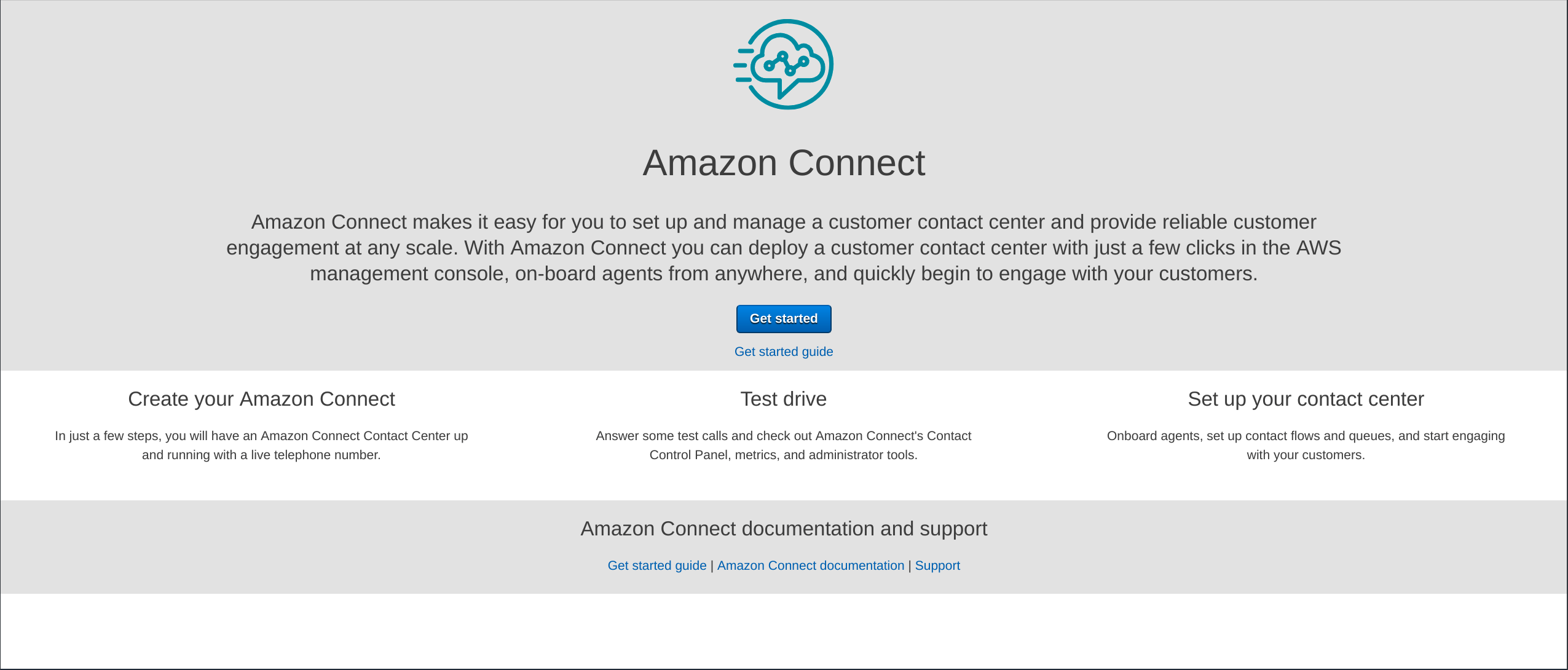
Identity Management
Clicking the “Get Started” button will take us to the “Amazon Connect resource configuration” wizard and present us with our first configuration option. Connect requires that we config a store for our users. This can be done one of three ways:
- Store users within Amazon Connect. Users will be created and managed by you within Amazon Connect. This is the simplest option and the one we will use for this example.
- Link to an existing directory. Amazon Connect will leverage an existing directory. You create users within the directory and then add and configure them within Amazon Connect. This is useful if you are already running a directory service within your AWS account.
- Use a SAML 2.0 provider. Like a number of AWS services, Amazon Connect support using a SAML2.0 compliant IdP and should be the preferred option when configuring a production Connect Instance.
For this example, we will go ahead and select the first option “Store users within Amazon Connect”. This option will allow us to get up and running without having to deploy additional services. Go ahead and make sure that the first option is selected and then give it a name. This name needs to be unique and will form part of the URL users will visit in order to log into the new instance. Once you’ve come up with a name, you can go ahead and click the “Next Steps” button.
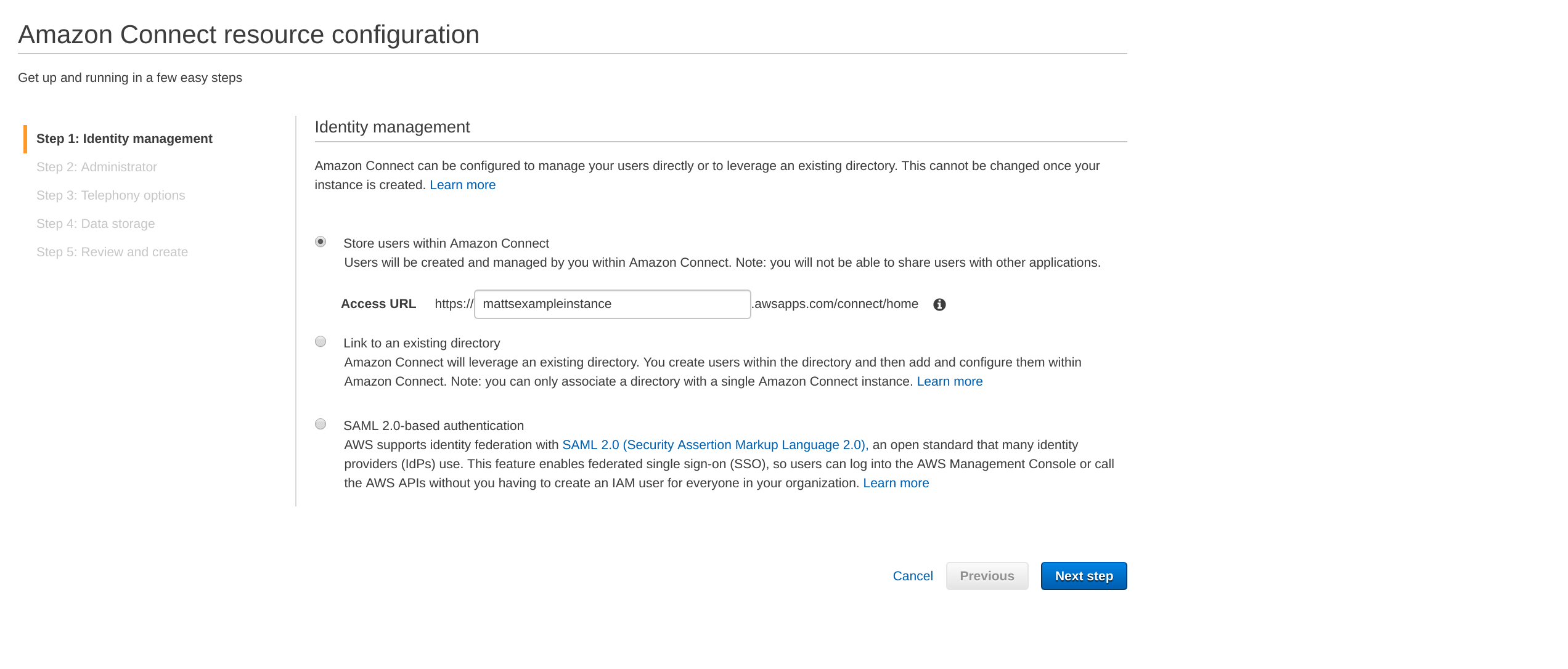
Administrator
Next, we need to provide some details around our new Instance Administrator. To make life easy, simply populate the form with your own details, you can add/change/remove this later if need be. Once you’ve populated all of the required fields, simply click “Next Step”.
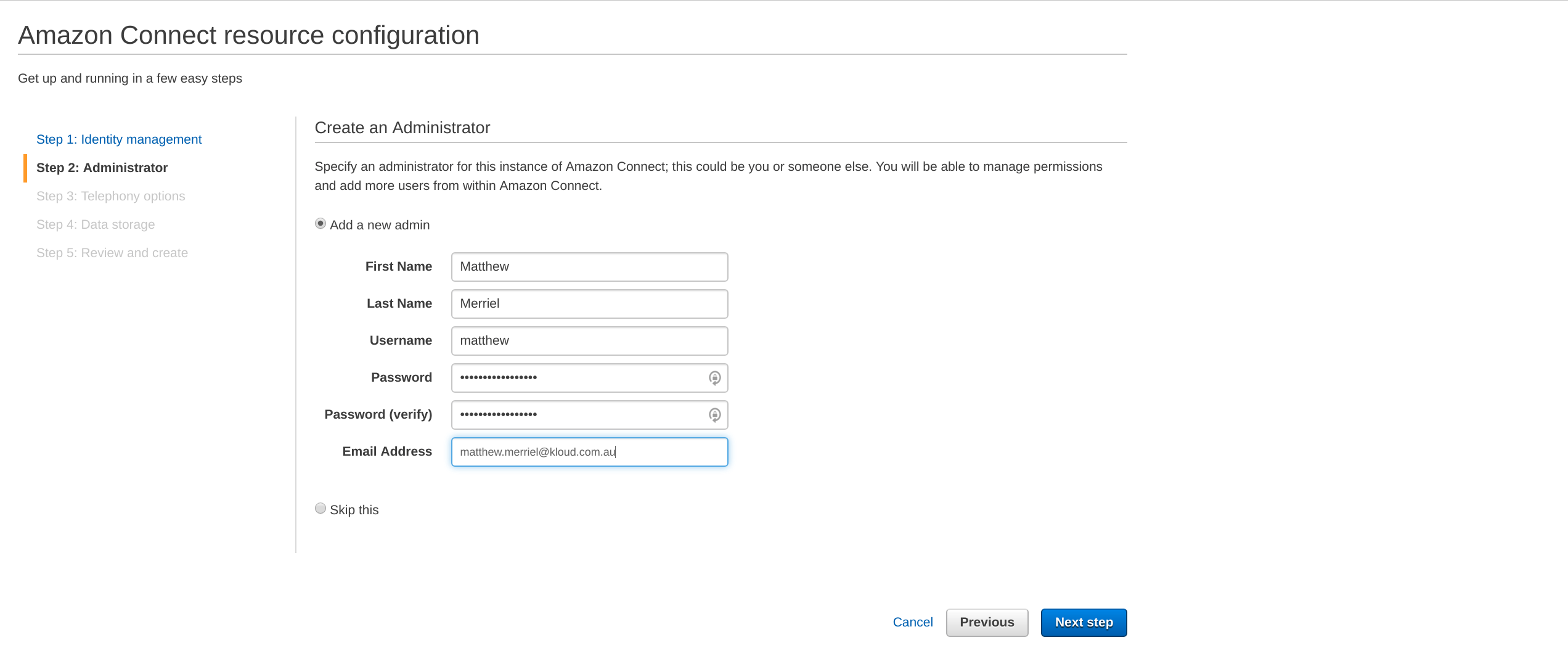
Telephony Options
The next screen asks us if we want to be able to handle incoming and outgoing calls. For this example, we will leave it as the default with both options selected so we can go ahead and click “Next Step”. It’s important to note that you will not be able to use these features until they are configured. In addition, you can also turn them on and off once the tenant setup is complete.
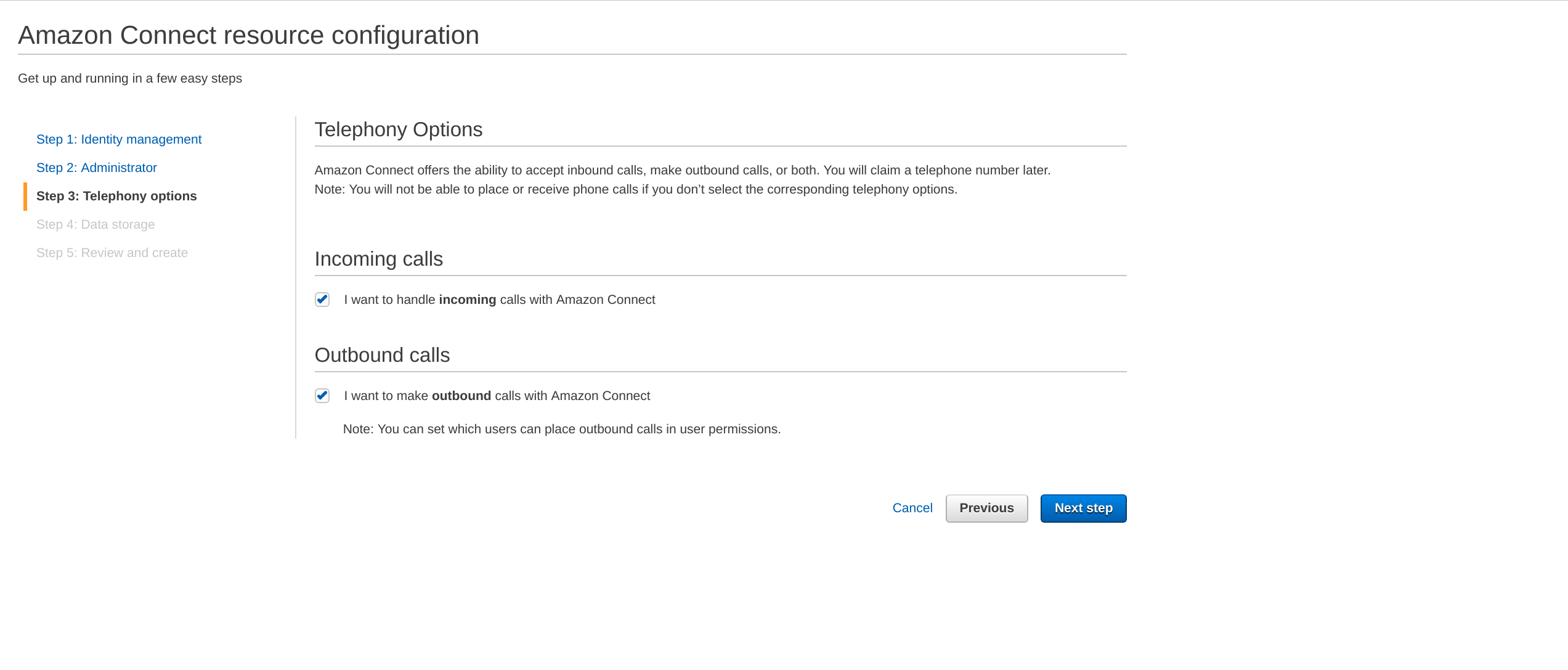
Data Storage
This page allows the configuration of what and where the data generated by the tenant will be stored. By default, the wizard is configured to create S3 buckets for the storage of call recordings and reports. All this data is stored using KMS keys and contact flow logs are published to cloud watch. For our example, these defaults are fine so unless you want to change the S3 Bucket names, you can simply click “Next Step”. In order to change any of the options, click the “Customize Settings” link, located below the store locations. Please note that I have blacked out the specific details in the screenshot below:
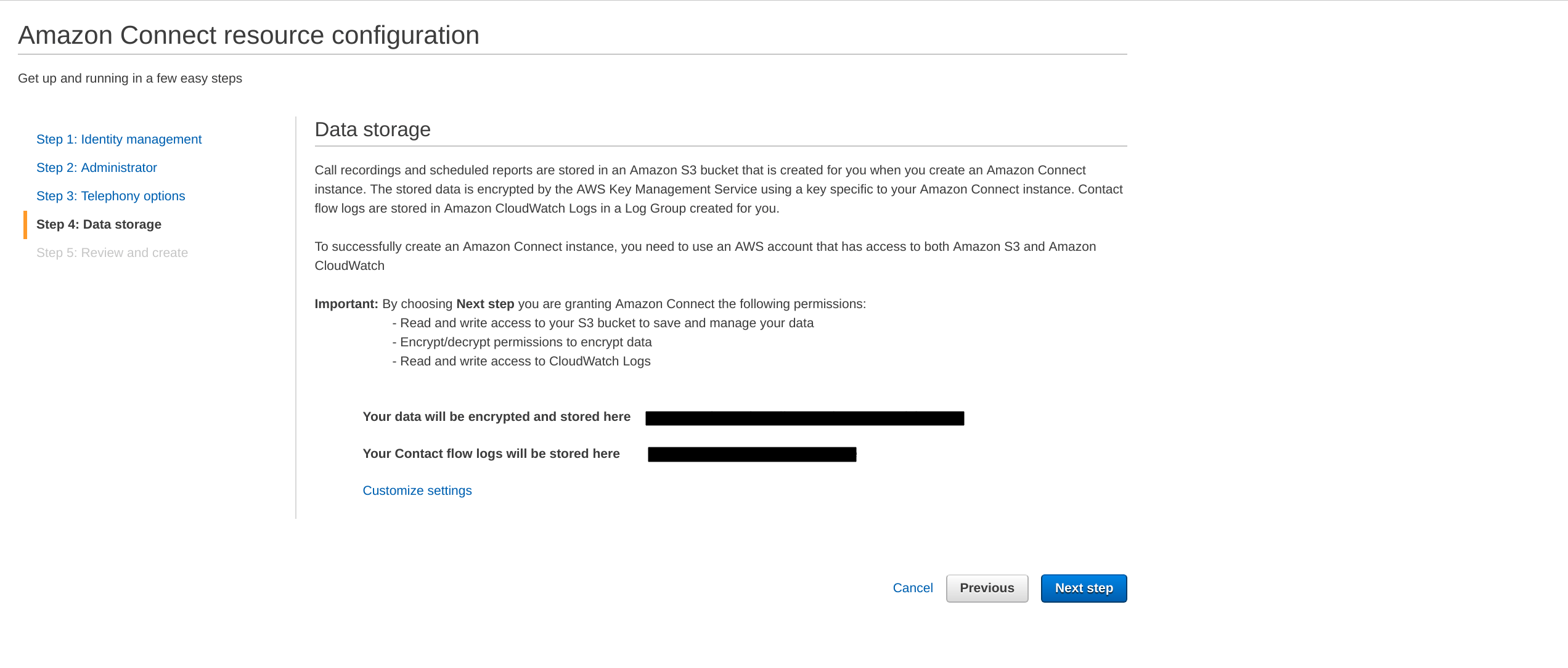
Review and Create
In the final step, the wizard presents a summary of the configuration options selected and provides the option to change any before the tenant is created. Review the settings and click “Create instance” to complete the setup wizard. Please note that again I have blacked out information relating to my S3 Buckets and encryption keys.
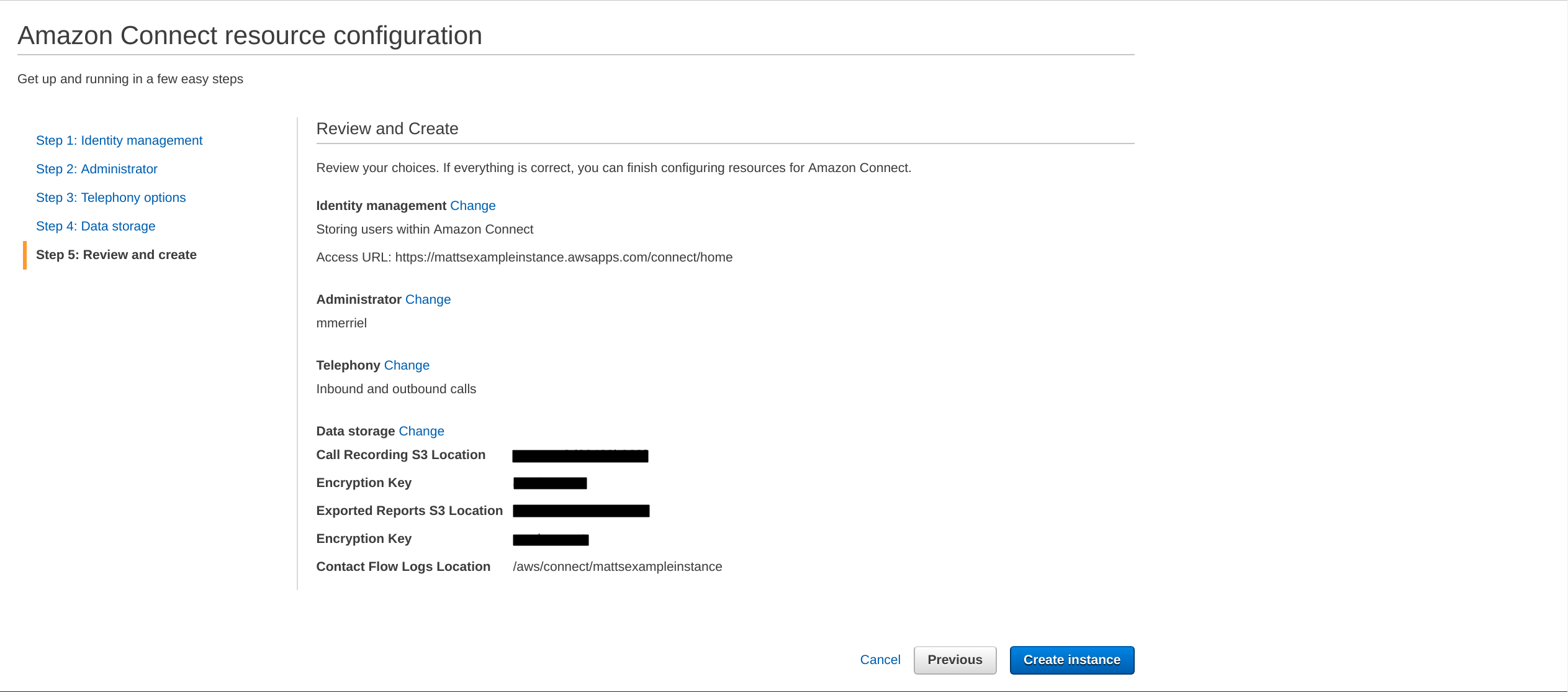
As soon as you click the “Create Instance” button, you should get a message like the one below:
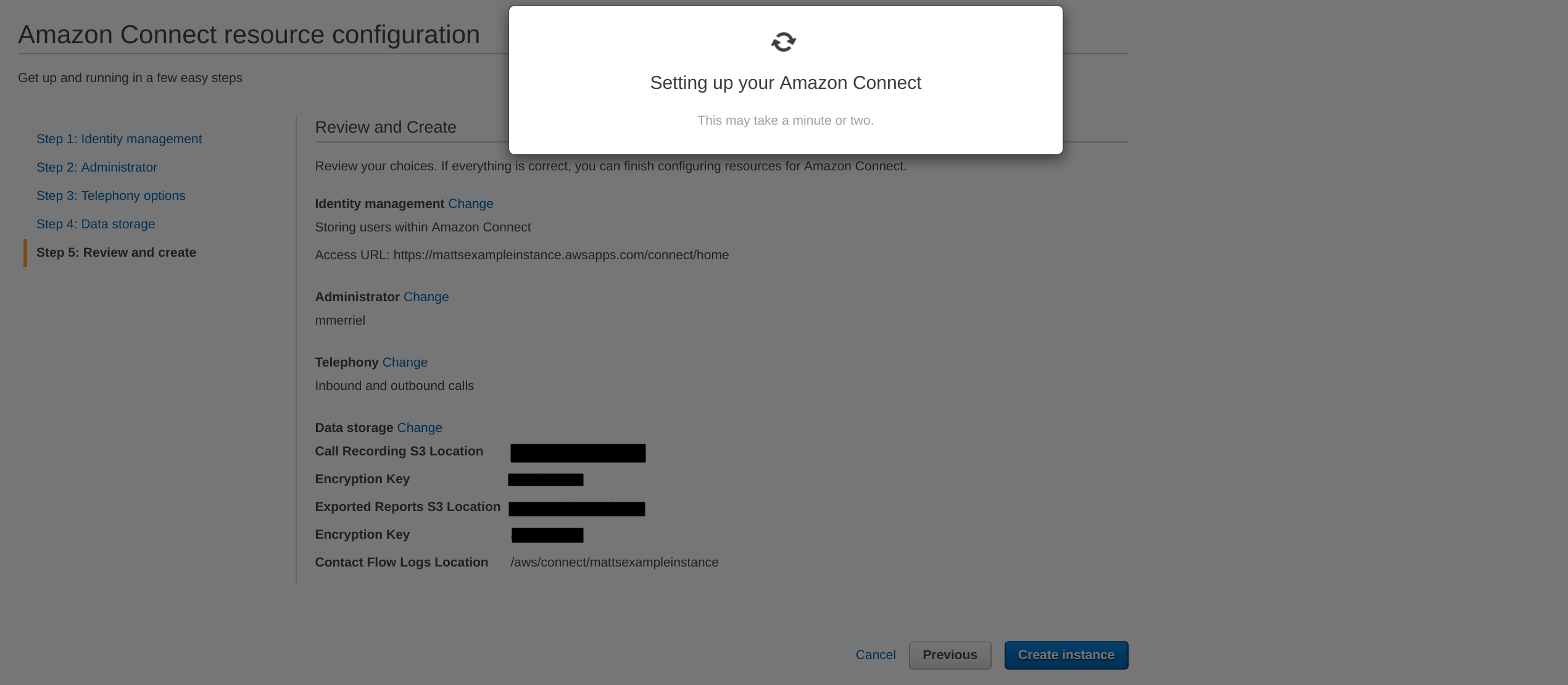
And then finally, you should receive a message stating “Your Amazon Connect has been created”.
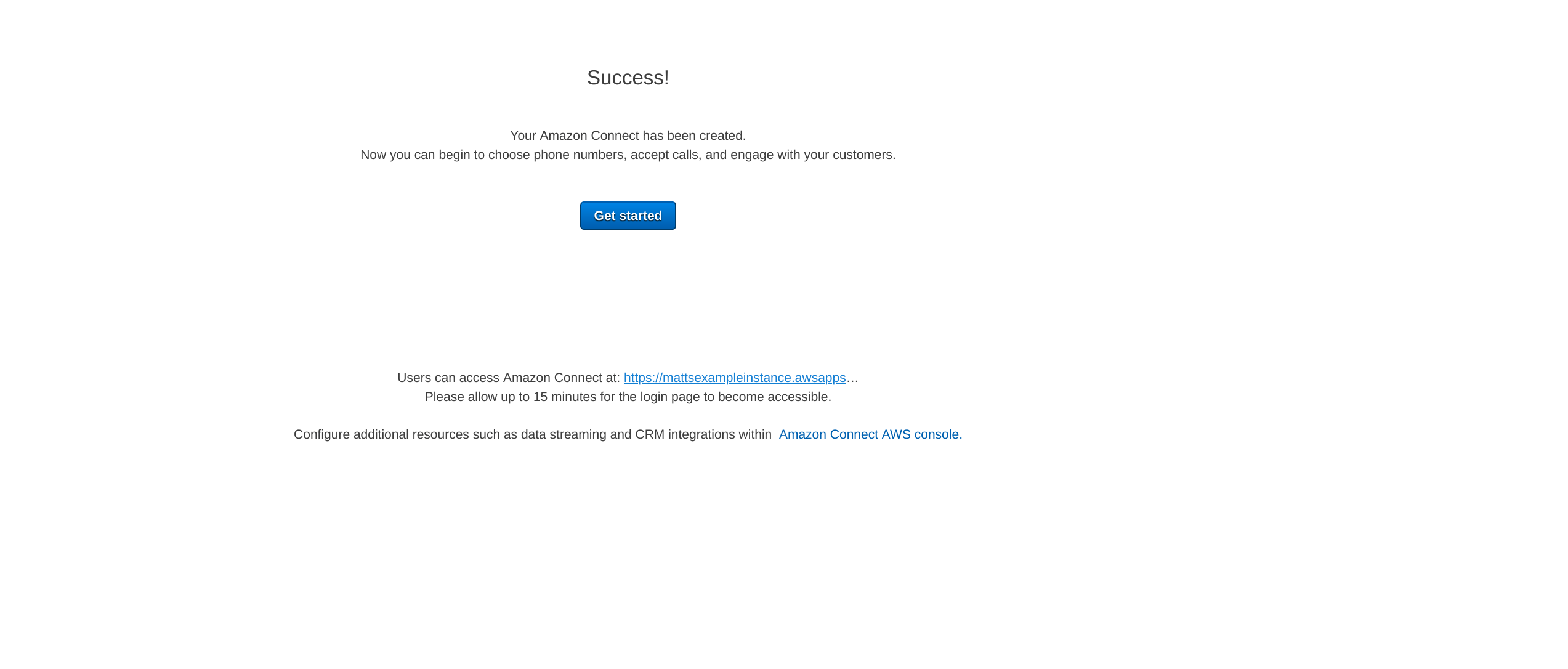
Clicking the “Get Started” button from this page will take you to your new Amazon Connect Instance dashboard. You can now start creating your contact center solution.
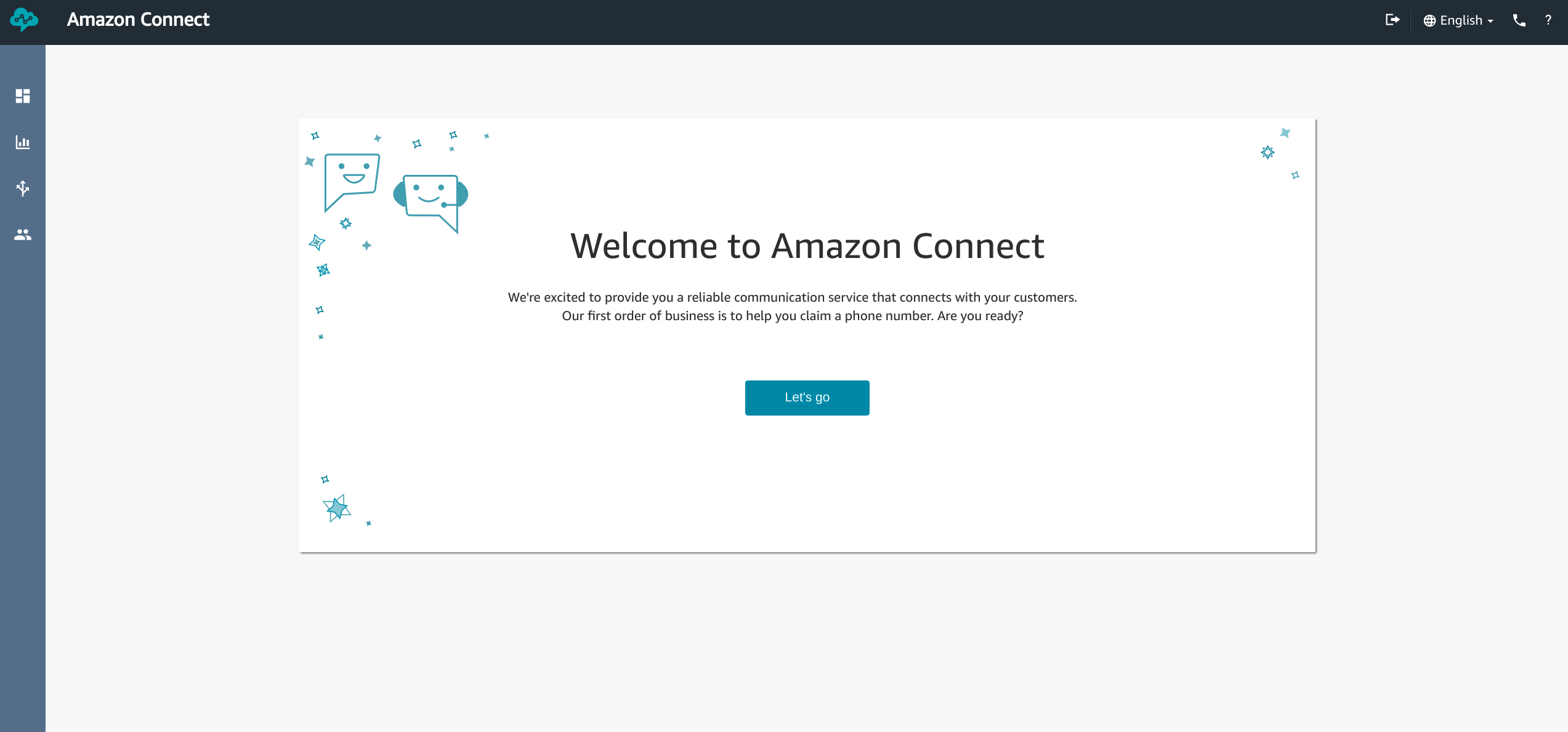
Conclusion
In conclusion, we have gone through the setup wizard and created an Amazon Connect Instance. I’ll admit that it’s not a particularly functional contact center at the moment (after all it doesn’t even have a phone number) but it’s up and running and ready to be configured. In the next article, we will walk through the process of adding an inbound phone number and directing it to a call flow so that we can start accepting calls. If there is a particular feature you’d like to see integrated into or working with an Amazon Connect instance, please comment in the section below.
